
Step inside Ukedo Elementary School, and you’ll find dark walls, hanging cables, and rubble scattered across cracked floors. Yet, many call this place miraculous. While the building itself reflects the painful story of a disaster, it also stands as an enduring symbol of hope and unity.
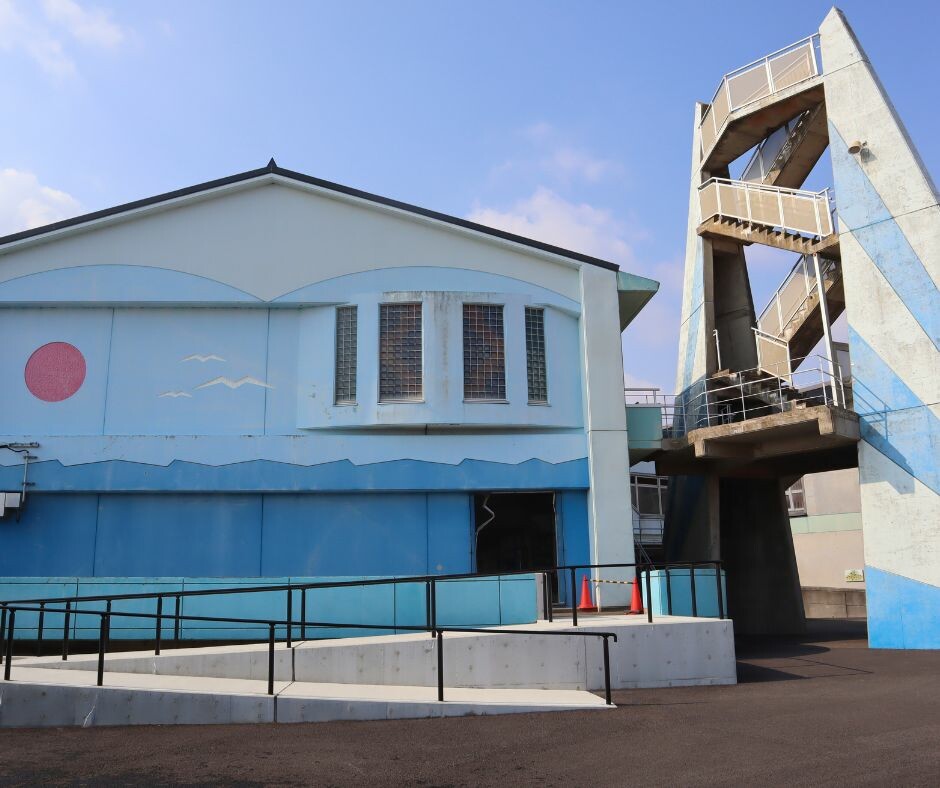
After a tsunami warning on March 11, 2011, teachers and principals at the Ukedo Elementary School, located 300 meters from the ocean in the coastal area of Fukushima, swiftly evacuated all students before the towering waves engulfed the area. All lives were saved. The school building sustained great damage, but it did not collapse. In the following years, residents asked for the building to be preserved as a testimony of the destructive force of the 2011 tsunami.
Ukedo: A Fishing Area With Close Ties to the Sea
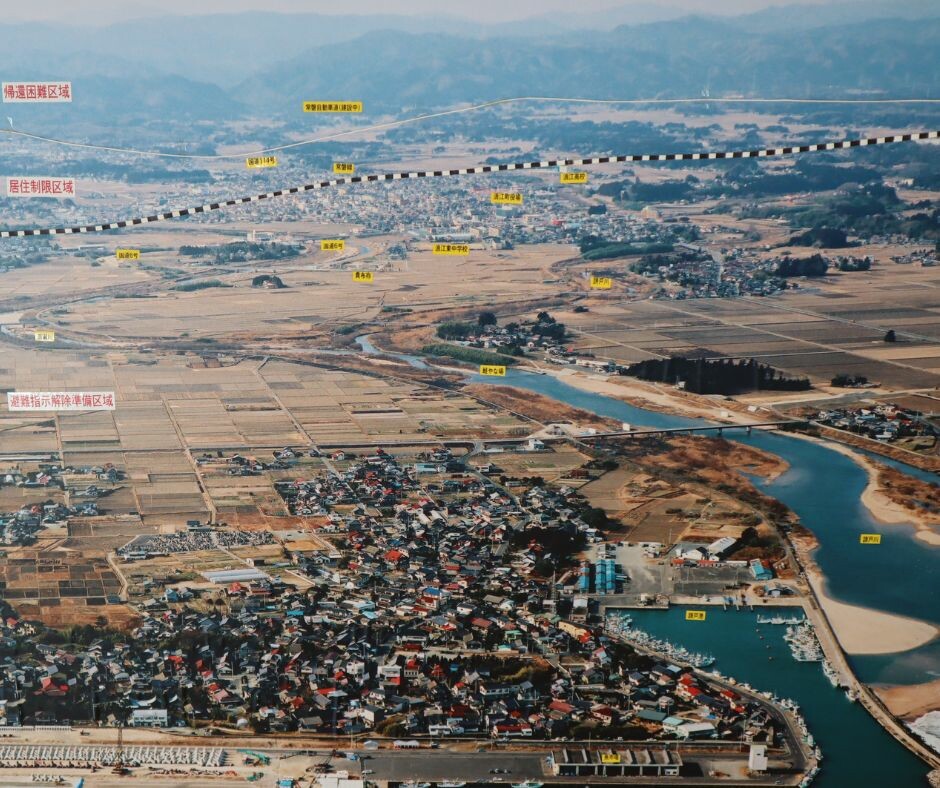
Ukedo Elementary School is located in Namie, a town in the Northern coastal area of Fukushima Prefecture. Today, the school is surrounded by flat fields and construction sites, but not long ago the area was a bubbly district made up of houses by the ocean where families enjoyed sea festivals, sailing, and going to the beach in the warmer months.
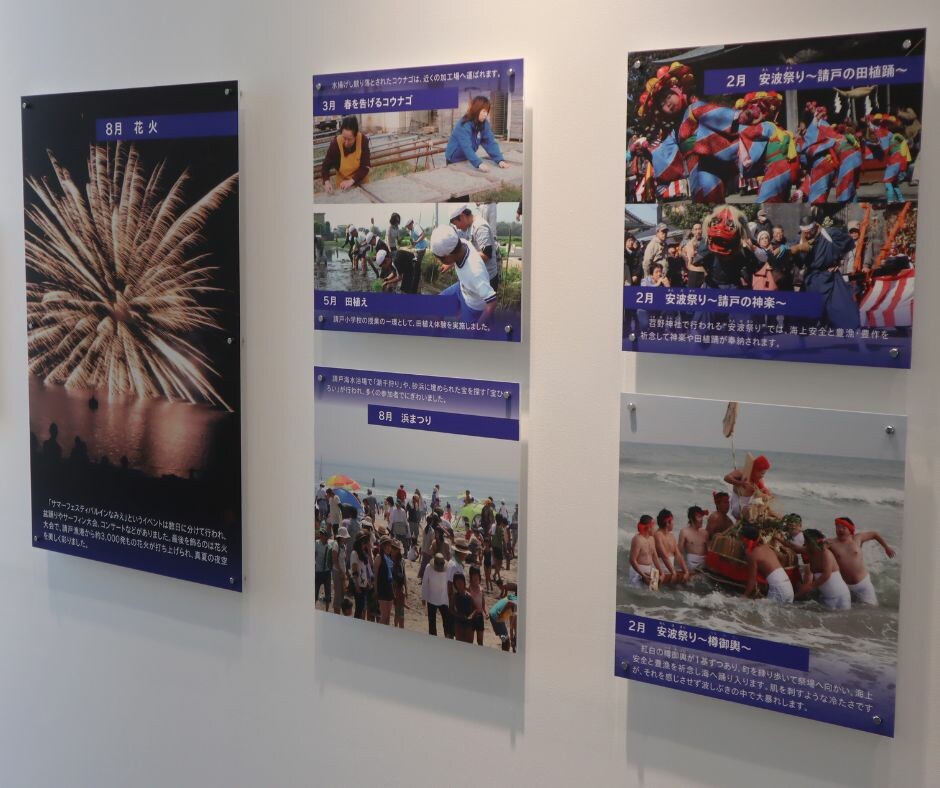
The 2011 Earthquake and Tsunami
Students at Ukedo Elementary School were attending classes as usual when the earthquake hit on March 11, 2011. A few minutes later, a tsunami warning was issued for the area. The teachers and principals promptly urged everyone to evacuate to Mt. Ohira, located approx. 1.5 km away.
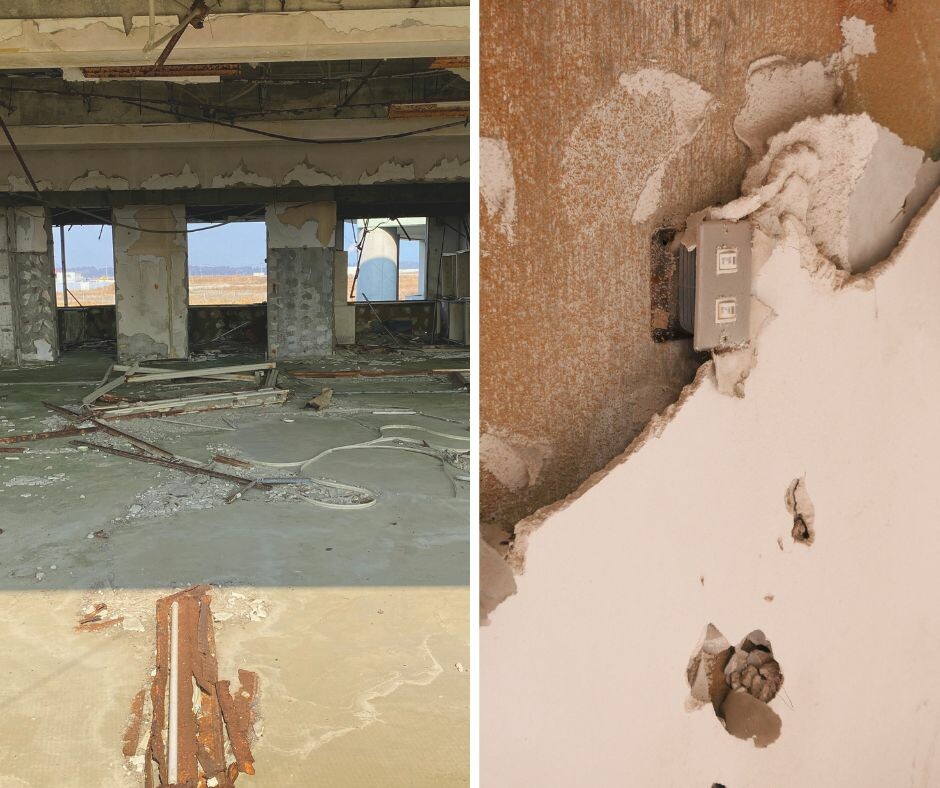
A Hasty but Successful Evacuation
Students had no time to take their belongings, or even put on their coats. The cold wind blew strongly as they escaped inland, guided by their teachers.
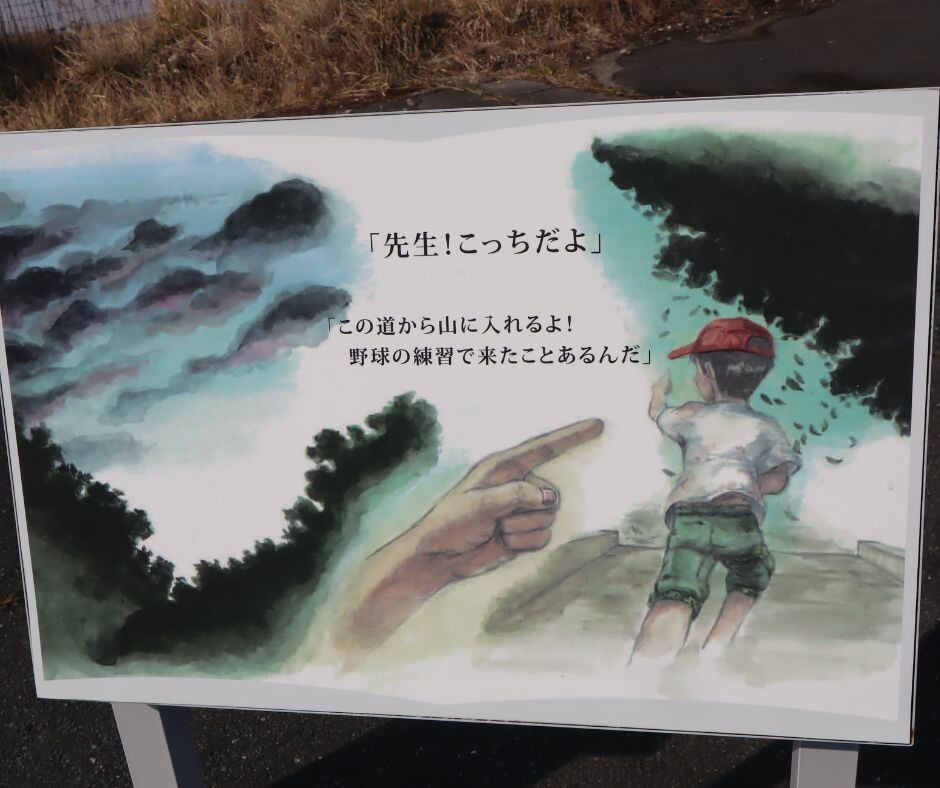
Once they reached the foot of the mountain, one of the students led the group, and everyone climbed to the other side toward safety. They reached a main road, where a truck driver picked them up and took them to an evacuation center.
Upon arrival at the center, students and teachers could ascertain that no one was missing or had been left behind. Even though everyone from the school survived, the tragedy brought by the triple disaster changed their lives forever.
The Area’s Aftermath & Reconstruction
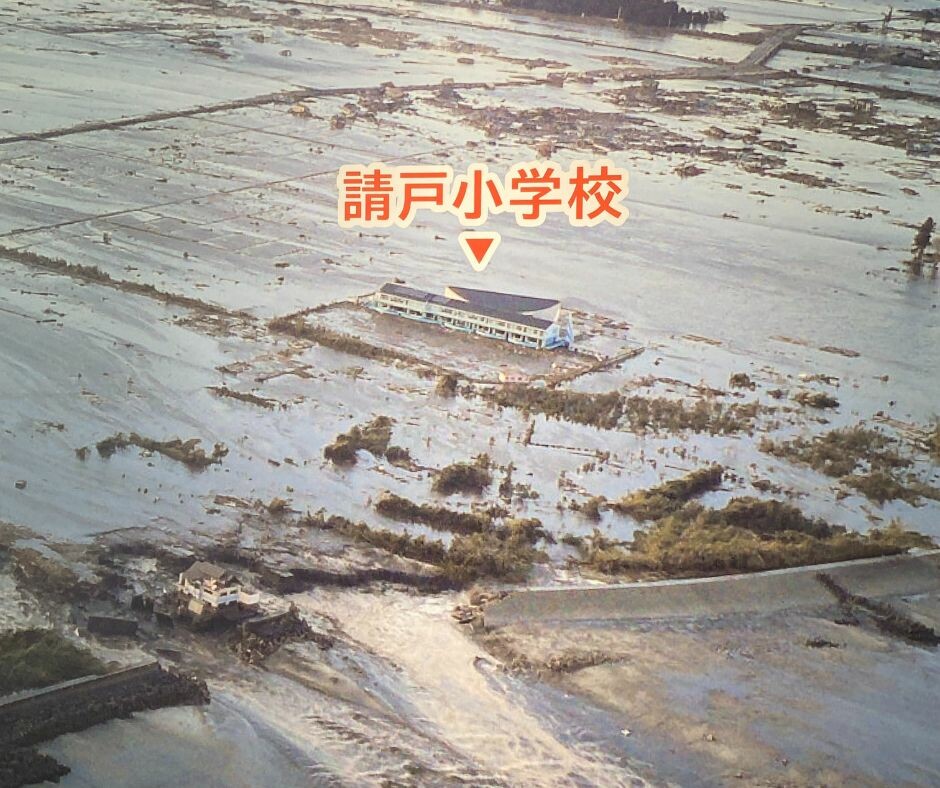
In Ukedo, the tsunami resulted in the loss of over 120 lives, and many people went missing. A total of 402 houses in the district were destroyed. People’s hometown as they knew it was lost forever.
To make matters worse, the area had to be evacuated due to the nuclear accident at the nearby TEPCO Fukushima Daiichi Nuclear Power Station. This meant that search parties couldn’t enter for weeks; and residents, who initially thought the evacuation would only last a few days, could not fully return home for several years.
Once rescue and recovery personnel were allowed back into the area, many houses and buildings started being demolished as part of the decontamination efforts. Devoid of vitality, the wrecked town looked nothing like the cheerful locality it had been only months ago.
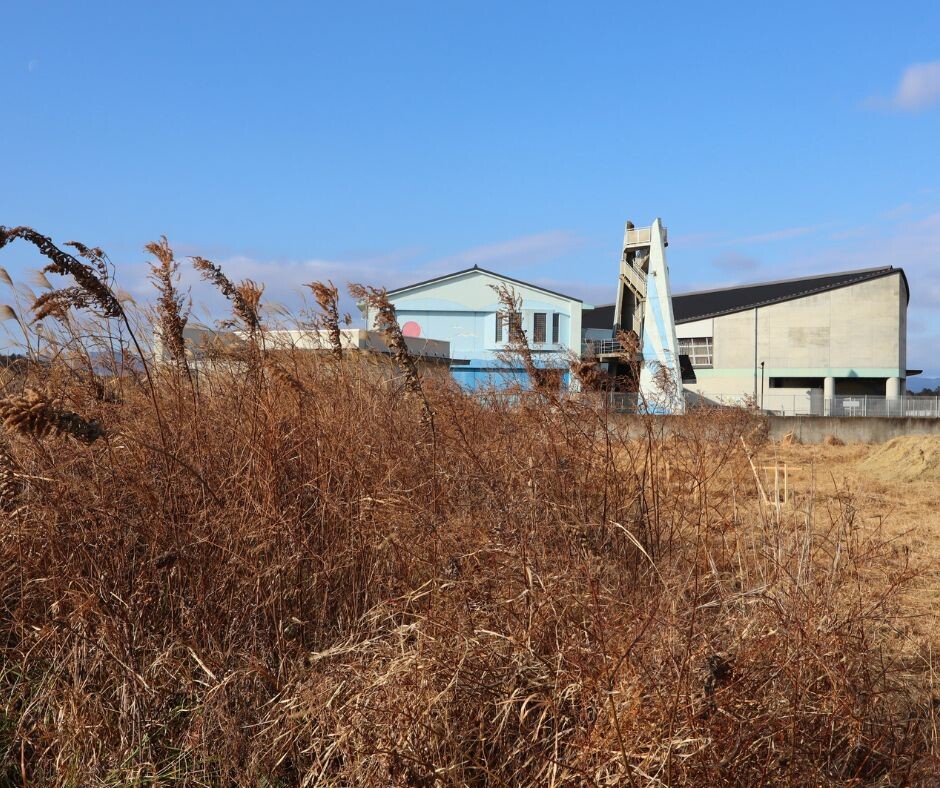
For about six years, residents had to be granted permission to return, and could only do so for a few hours at a time due to radiation concerns. Knowing that some returning residents may also visit the school on their way to or from their houses, rescue personnel left encouraging messages and wishes for the area’s recovery on the school blackboards. Those who stopped by the school, in turn, replied. Soon, the blackboard was filled with cute drawings and kind interactions between both strangers and lifelong friends. The blackboard and the messages were preserved and are on display at the school today.
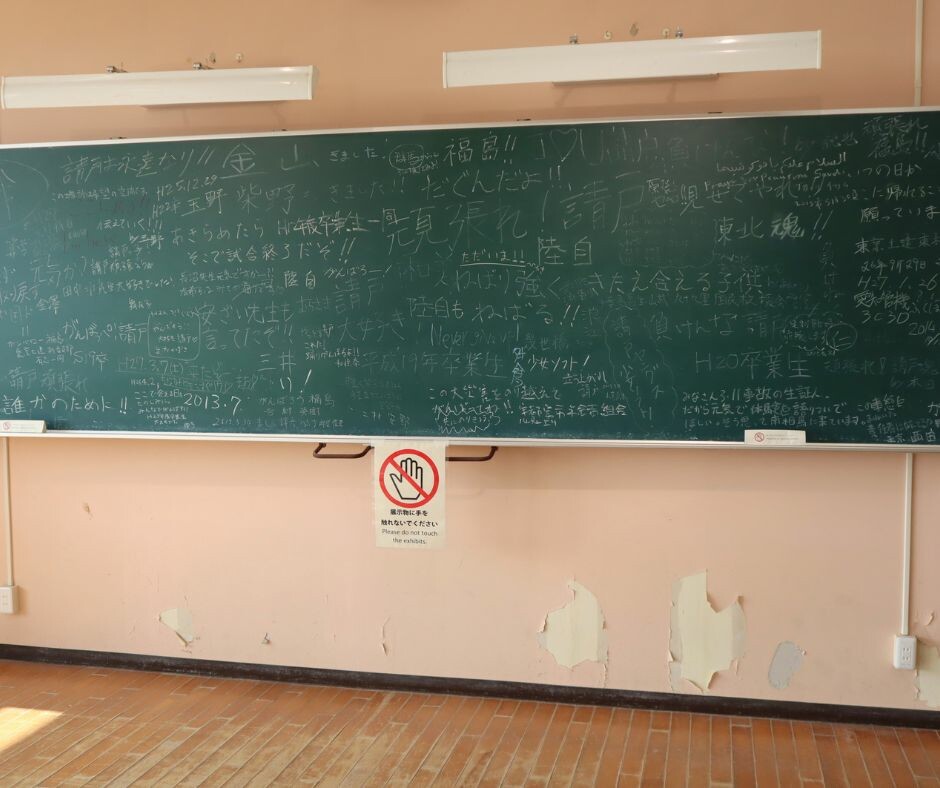
When the evacuation order for the Ukedo area was lifted in 2017, the Ukedo Elementary School building was one of the few left standing, although it was utterly devastated. With time, more and more people expressed their wish to make the school building a memorial site to pass on the lessons of the tsunami, honor the Ukedo community, and let visitors see firsthand how disaster preparedness can save lives.

In October 2021, the school opened for visitors and has since then become one of the flagship facilities where visitors can learn about Fukushima’s recent history and revitalization.
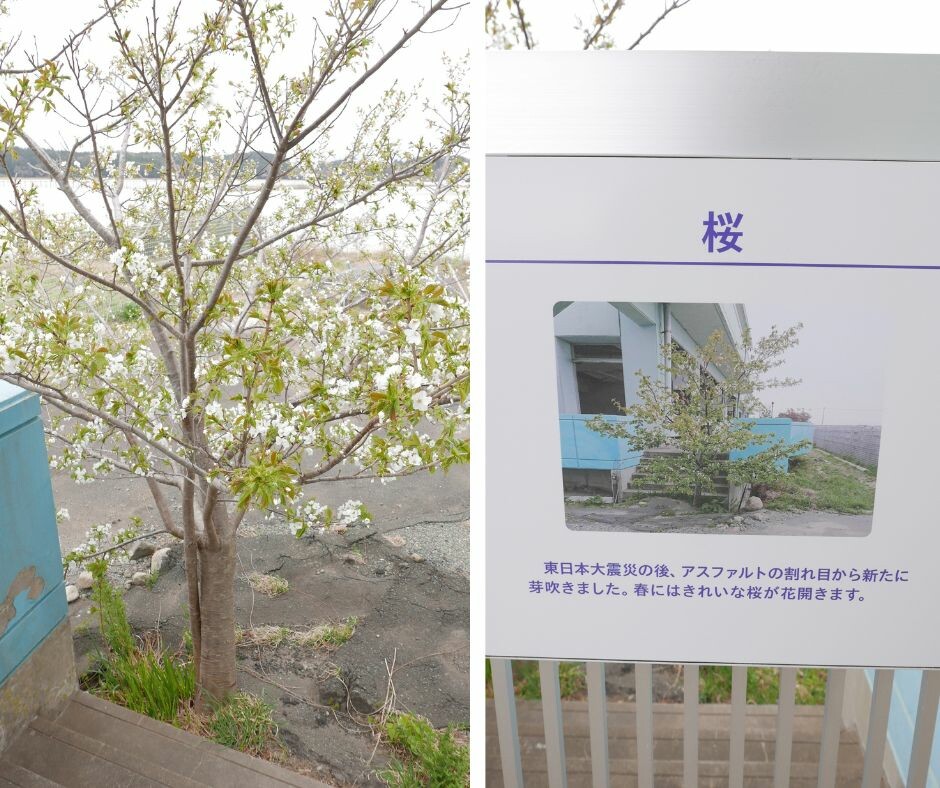
After the disaster, a sakura tree began inexplicably growing from the asphalt by one of the old school entrances. The tree blooms beautifully each spring.
Flow of the visit
You will begin your visit on the ground floor, with an exhibition showing life in Ukedo before the disaster.
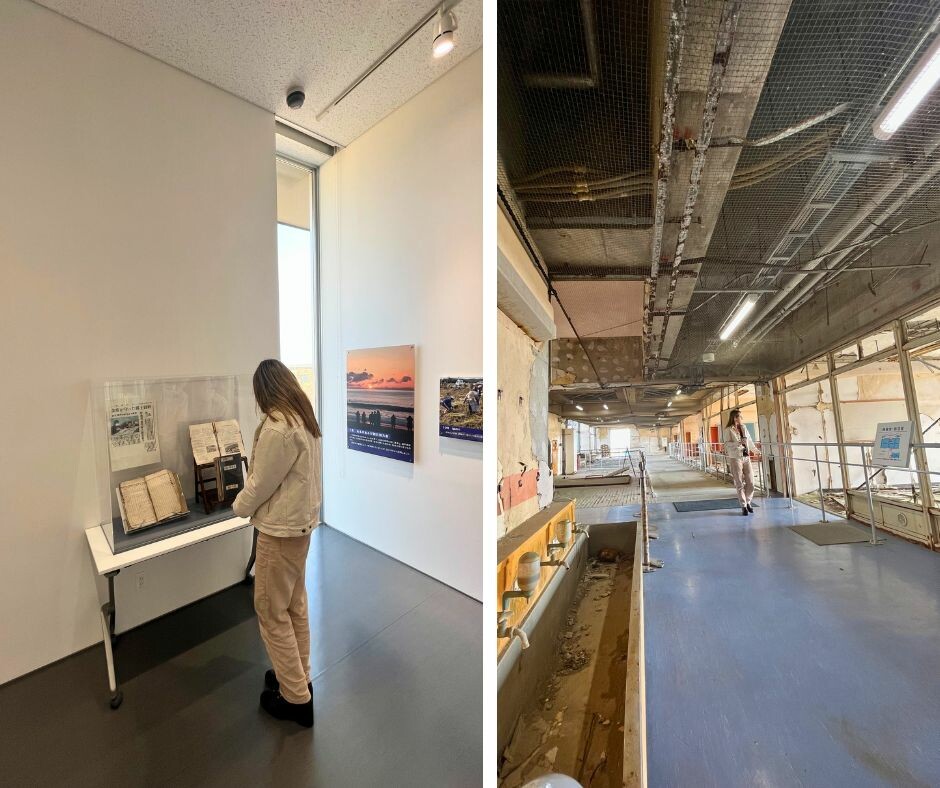
Next, you will enter the main school building, where you will grasp the scope of the destruction of the tsunami. You will see what the classrooms, staff rooms, kitchen, dining room, and school gymnasium look like now, alongside photographs showing what they used to look like.
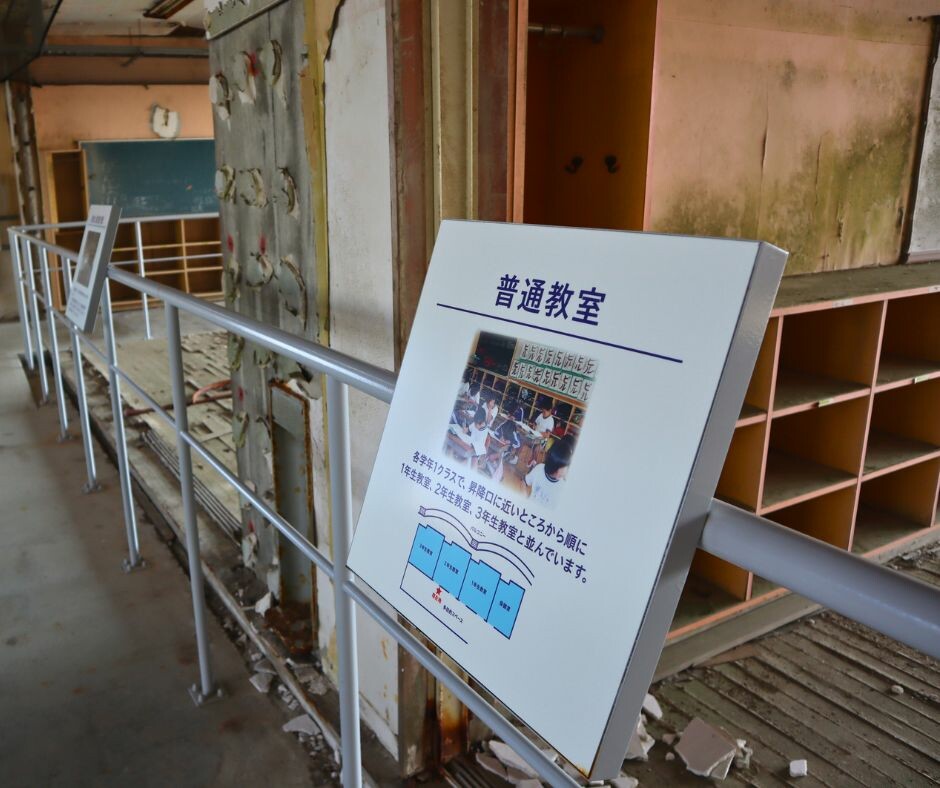
After walking in and around the first floor, you will head to the second floor, where you will learn more about the impact of the earthquake, the tsunami, and the nuclear accident. There is information about the area, a model of the town, as well as images of the blackboard with support messages.

Advice for Visitors
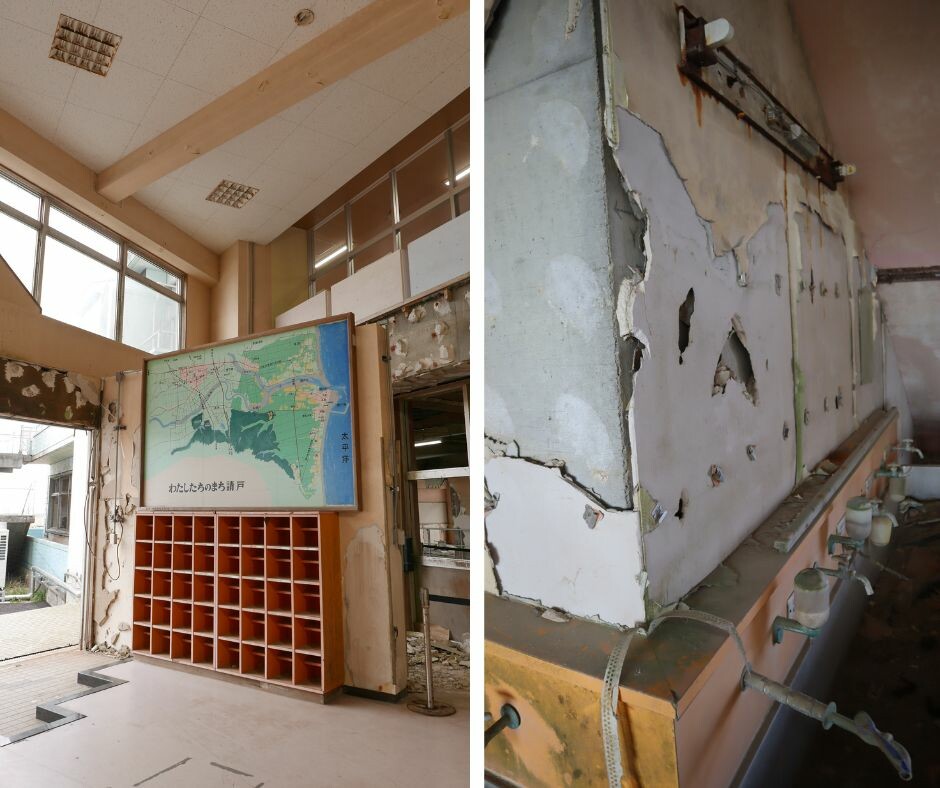
- Scan the QR code at the entrance to access the English translation of the explanation panels. As you walk inside the school, look for the corresponding number for each panel on the website to read the explanations in English.
- When looking at the building from the outside, notice the blue panels showing the height of the tsunami.
- Because this area has undergone extensive reconstruction, sometimes car navigation systems cannot accurately guide you to the school. If you notice your car GPS trying to take you down a road that is no longer there, we recommend using your phone navigation system instead, which might be more updated.
- There is a toilet and a vending machine at the site, but no convenience stores, supermarkets, or restaurants are nearby, so consider eating or buying snacks before your visit.
- After visiting the school, we recommend walking to the Ukedo Port to see what the area looks like today.
Access
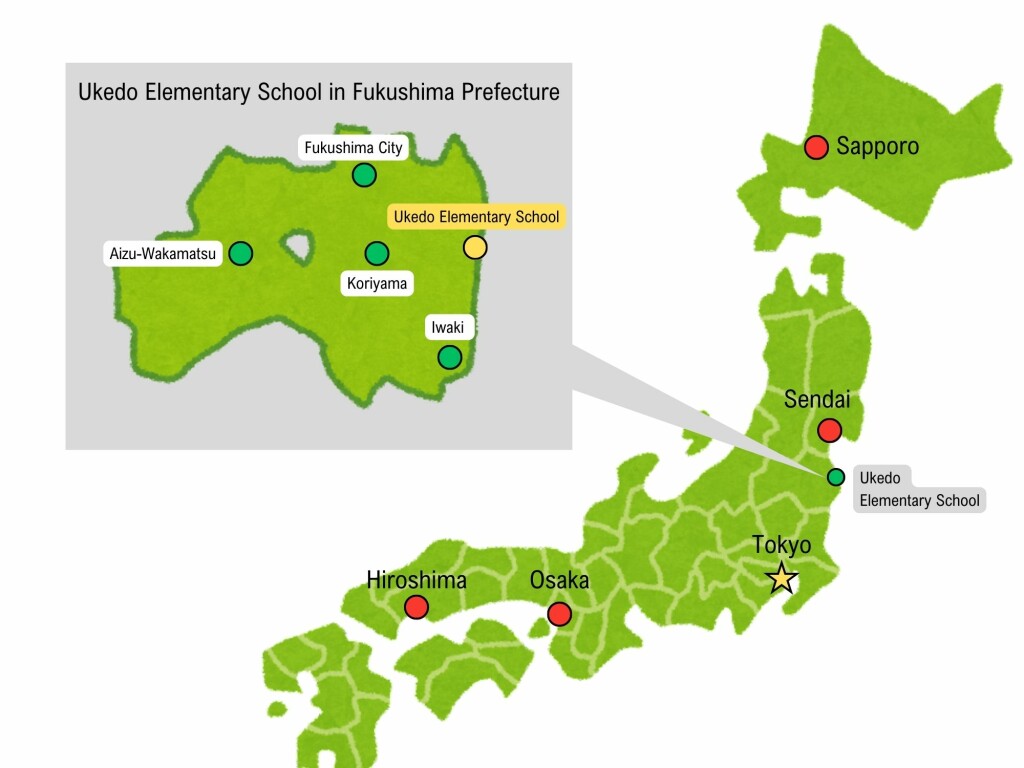
By Train, Bus & Bicycle
- From the JR Futaba Station (JR Joban Line), take the shuttle bus from Futaba Station to the Great East Japan Earthquake and Nuclear Disaster Memorial Museum.
- Take one of the free rental bicycles at the museum and ride to Ukedo.
By Car
- Approx 1 h 45 min from JR Koriyama Station [郡山駅] via National Road 288.
- Approx 1 h 29 min from Sendai Station [仙台] via the Joban Expressway.
- There is a parking lot available at the site.
By Train & Taxi
About 15 min. by taxi from Namie Station [浪江駅] (JR Joban Line). Please note, though, that there are no taxis at the station, so please make your travel arrangements in advance.
Useful Links
The Remains of Ukedo Elementary School in Namie Town
Fukushima’s Revitalization Educational One-Day Trip
The Great East Japan Earthquake and Nuclear Disaster Memorial Museum


